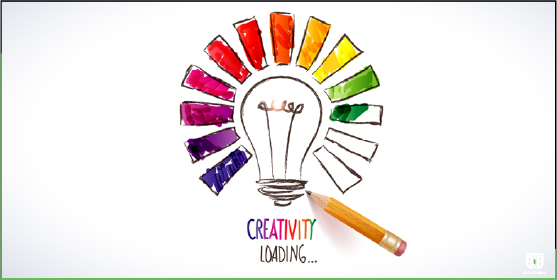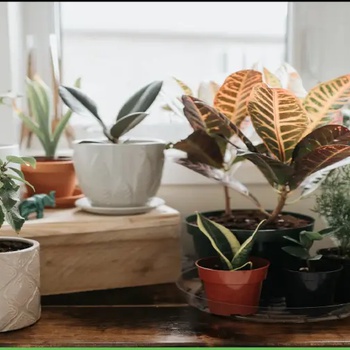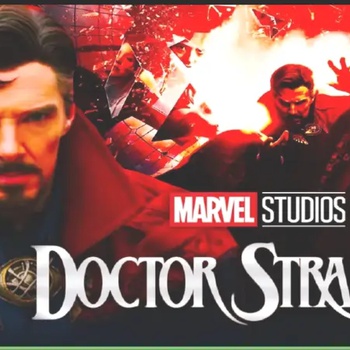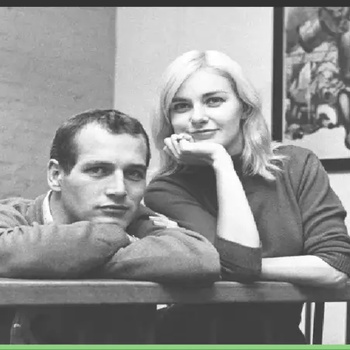How to develop creativity?
Creativity is not everyone’s cup of tea. But this isn’t something restricted from developing or which is hard to acquire. I used to envy those kinds of people who always bring creative solutions to the table and enjoy the rewards. I have always wanted to work as creative as others. But to no avail. After a lot of effort, I have jotted down some tried and tested methods to develop creativity. Today, I am going to share them with you. If you are someone who is in the same phase as I am, this article is especially for you:
- Commitment: The first principle everyone must remember before learning any skill is commitment. Skills are not 2-minute noodles; they take effort, time, patience, and commitment. You should make up your mind the very moment you embark upon the journey. Devote yourself completely, don’t leave mid-way, and put consistent efforts, you will make it one day.

- Think normal but don’t do normally: The main objective in front of you is to think creatively. First, think how normal minds do and learn that this is not how the creative creatures think. Always think normal and deduce creative ideas from your ordinary thoughts in the initial stages.

- Think like a child: Because kids have no bounds to their creativity. Interact with them and observe how they think. They have no bounds because they don’t hold back. Similarly, realize that creativity knows no bounds. Try to think out of the box. Children are willing to take risks. Be willing to take risks and think out of the box. And the most important thing is to enjoy your journey. Children enjoy their processes without focusing on the end goal. Detach yourself with the responsibilities, take risks, and put your best foot forward.
 Listen to creative people: The Internet has brought the world to your fingertips. Watch, listen and read - videos, speeches, and books of creative people. Observe their thinking patterns. Put yourself in the same situation and think about what you would have done if you were in the same situation. Develop critical thinking. The first step to creativity is to develop curiosity. Be curious about learning.
Listen to creative people: The Internet has brought the world to your fingertips. Watch, listen and read - videos, speeches, and books of creative people. Observe their thinking patterns. Put yourself in the same situation and think about what you would have done if you were in the same situation. Develop critical thinking. The first step to creativity is to develop curiosity. Be curious about learning.
- Reward your curiosity: Reward yourself whenever you are curious about something. Don’t reprimand yourself. Always question why and how.

- Build confidence: As I said earlier, creativity knows no bounds but it can be suppressed by your insecurity. Lack of confidence and insecurity kills critical thinking ability. Never let that take over you. Be confident in yourself and the process involved as well. Confidence is the best investment anyone can make in you.

- Overcome negative thoughts: Negative thoughts are the greatest threats that don’t let you achieve something. Even a ladder seems like an insurmountable mountain with a head full of negative thoughts. To climb this insurmountable mountain in front of you, you must get over the negative attitude first of all.

- Make time and brainstorm: Take some time out of your schedule for brainstorming. Brainstorming is a productive tool to activate your brain. Jot down all the ideas, and judge them. Constructive self-criticism is the best teacher. Work on refining your ideas. Give them a new shape every day. Expand your horizons every day. Keep getting better every day.

- Multiple solutions: Remember, there are multiple solutions to every problem. So, don’t limit yourself to one idea for one issue. Keep trying for a variety of solutions. Don’t settle on one or the other idea, take time to think and explore all the possible ways to approach a single situation. Ask your friends or near ones to judge your ideas. Take their suggestions into account. Keep honing your skills.
- Creativity journal: Why don’t you keep a creativity journal? Jot down all your progress, ideas, and thoughts in one place. Whenever you encounter self-doubt, sneak a peek into your journal. You will then recognize you couldn’t be any more right. Also, journals are a great way to reflect on what you’ve accomplished. If you get a better idea, you can make a quick edit there and then.

- Six hats technique: While I started on my journey, I was as confused as you are now. In the process of exploring different techniques to develop creativity, I have come across this cool technique that is called the “six hats technique.”
Six hats technique is a technique that involves developing critical thinking by looking at a problem from six different perspectives:
- Black hat: determines a negative perspective. Use this to recognize which solution doesn’t work
- Blue hat: This should guide you in the path of the best possible solution. Think broadly.
- Green hat: Brainstorm alternative ideas. Think creatively.
- Red hat: Look at the situation from an emotional lens. What can be the possible solution?
- White hat: This is more about logic and reasoning. Think objectively and come to logical conclusions.
- Yellow hat: While black hat tells you what won’t work, yellow helps you gain a positive perspective. Try to see positive as much as possible.
- Draw inspiration: from every other source. Be it a museum, a book, a movie, a real-life situation, or anything. Nature itself is an inspiration and if you have a deep-eye inspiration is found anywhere and everywhere.
- Snowball technique: One idea might not be appropriate for one problem, but it might be relevant to another problem. Always set aside your ideas and thoughts for the future course of action. Any one of your ideas might fit perfect for something. Implement them in your future projects.
Practice is the best way to channelize your inner creativity. Many psychologists have argued time and again that creativity is not inherited and can be acquired. It is as much a skill as any other skill. And you can get better with practice. While physical building needs physical exercises, the mental building needs cognitive exercises. Keep practicing and keep improving.






















